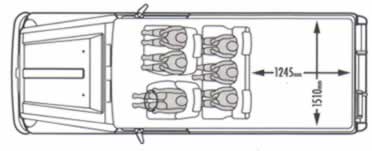 Why would you want a second US passport? Most people do not need a second passport. However, those who travel very frequently may find that their passports are always in the mail to a consulate or embassy to obtain a visa and this impedes their ability to travel. Other travelers may find that certain countries will not permit the entrance of travellers whose passports show that they have visited another country with which they do not have good relationships. This is the case between some Arab states and Israel and has been the case between some African states. The solution is to apply for a second US passport. This is the exception to the rule, so some additional information is required. Please complete the following steps. These applications may also be made by mail if you are in the US.
Why would you want a second US passport? Most people do not need a second passport. However, those who travel very frequently may find that their passports are always in the mail to a consulate or embassy to obtain a visa and this impedes their ability to travel. Other travelers may find that certain countries will not permit the entrance of travellers whose passports show that they have visited another country with which they do not have good relationships. This is the case between some Arab states and Israel and has been the case between some African states. The solution is to apply for a second US passport. This is the exception to the rule, so some additional information is required. Please complete the following steps. These applications may also be made by mail if you are in the US.
To apply for a second valid passport, you will need to make an appointment at the US Embassy and submit the following documents in person:
-
The DS-82 application form;
-
Submit your currently valid passport;
-
A written request from your company or organization (on letterhead, signed by someone else) explaining why a second valid passport is needed;
-
An affidavit signed in the presence of the Consular Officer attesting to the use of the second passport;
-
Two photographs (5cm x 5cm on a white background)
-
Pay the appropriate fee.
If you already have a second passport and want to renew it, please submit the following documents in person:
-
The DS-82 application form;
-
Submit your current second valid passport;
-
A written request from your company or organization (on letterhead, signed by someone else) explaining why a second passport is still needed;
-
An affidavit signed in the presence of the Consular Officer attesting to the use of the second passport;
-
Two photographs (5cm x 5cm on a white background);
-
Pay the appropriate fee.
This information was taken from the website of the US Consulate General in Amsterdam.
More Information:







 In The World is Flat, Thomas Friedman, foreign affairs columnist for the New York Times, describes how the world has become a more equal playing field to many of its people and the resulting implications. Friedman begins his book by giving examples of global out-sourcing and the extent of global communication. He explains how new technology has resulted in creating a level playing field, or a “
In The World is Flat, Thomas Friedman, foreign affairs columnist for the New York Times, describes how the world has become a more equal playing field to many of its people and the resulting implications. Friedman begins his book by giving examples of global out-sourcing and the extent of global communication. He explains how new technology has resulted in creating a level playing field, or a “
 How does globalization affect the church and missionary work? Here are links to help you quickly gather the ideas from four key books. These may help you better understand and discuss globalization and the world in which we live.
How does globalization affect the church and missionary work? Here are links to help you quickly gather the ideas from four key books. These may help you better understand and discuss globalization and the world in which we live.